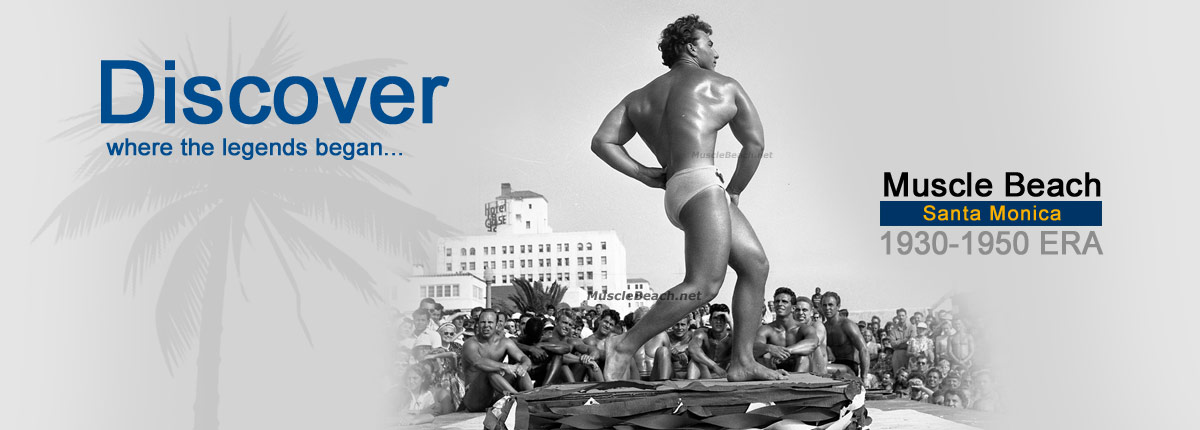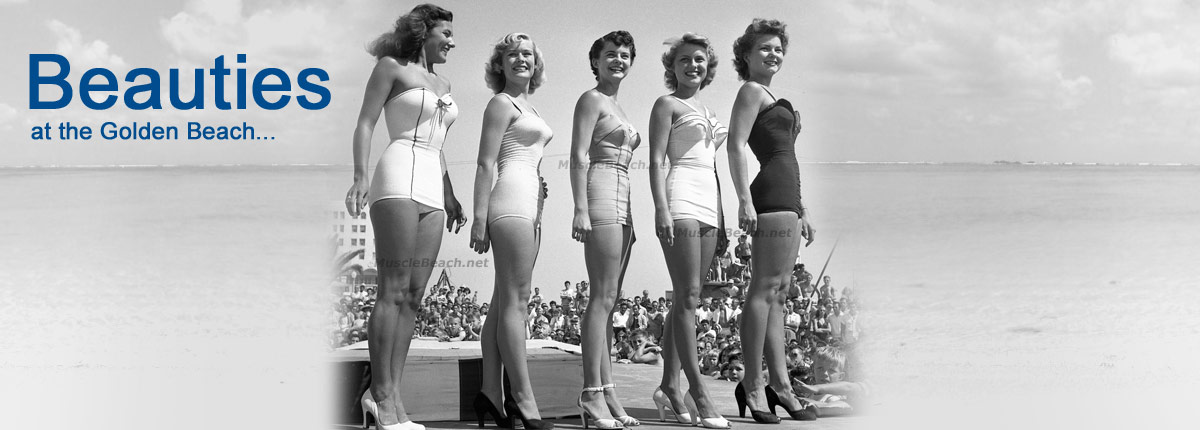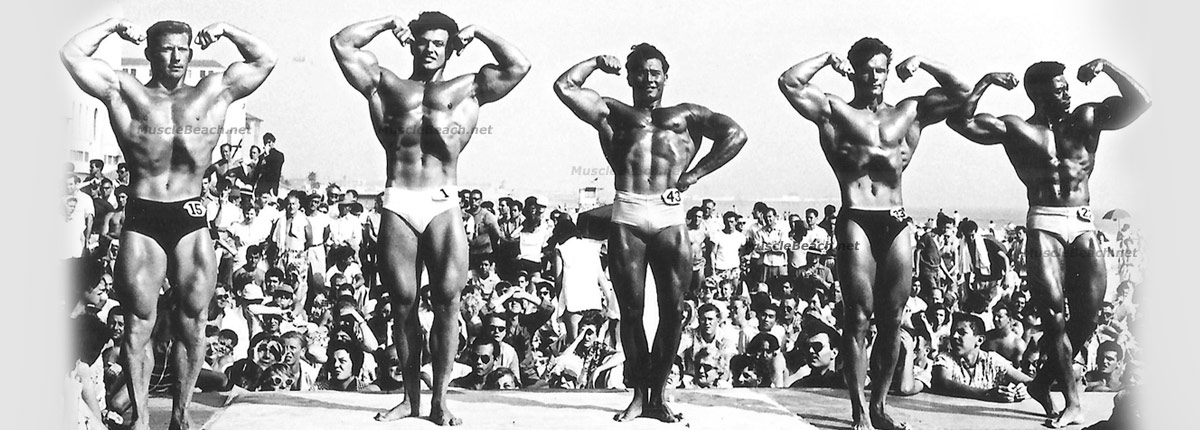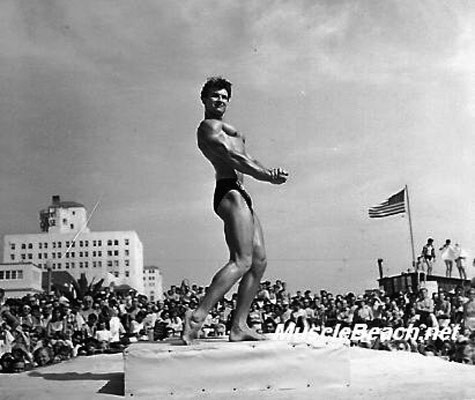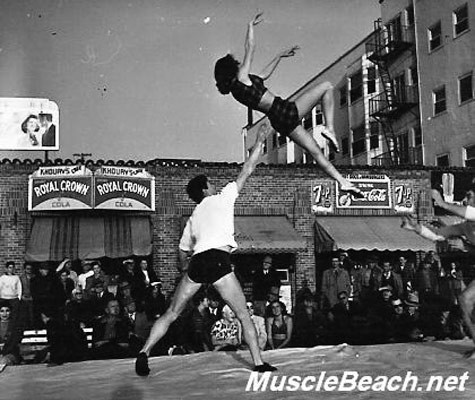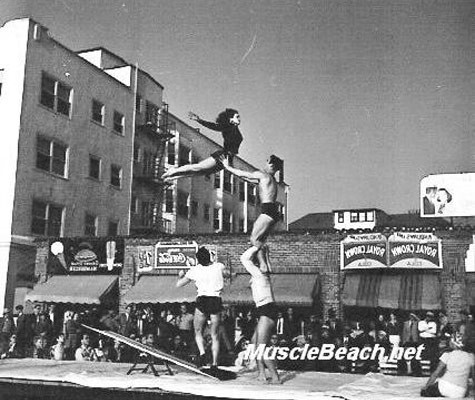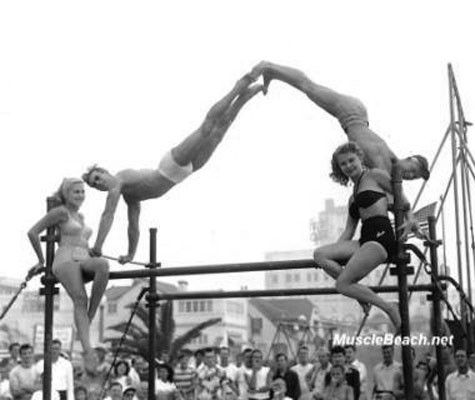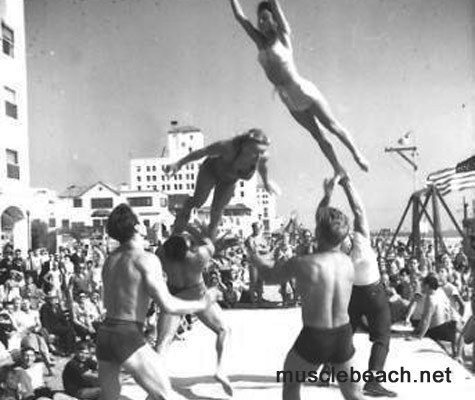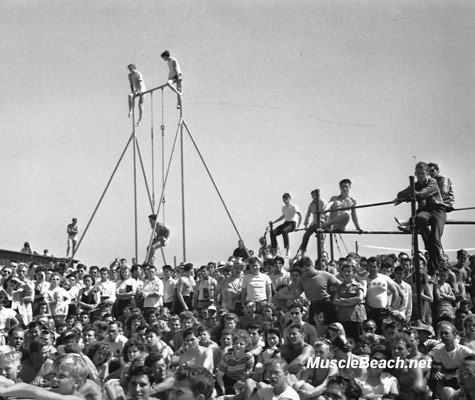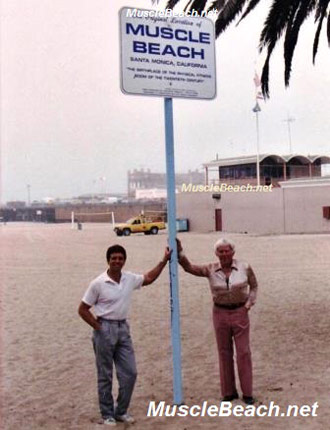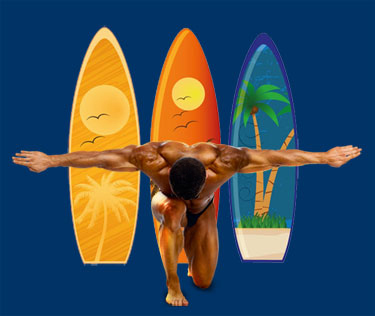Welcome to Muscle Beach – Santa Monica
Muscle Beach emerged south of the Santa Monica Pier in the period of 1933-34 due to a combination of events that converged to increase the popularity of the beachfront area that began as a children’s playground in the 1920s.
Following the famous financial crash of Wall Street in 1929, the sustained economic Depression created crisis levels of unemployment. While Hollywood continued to generate popular films filled with drama, adventure and suspense that helped divert audiences away from hardships of the era, movie houses required paid admittance. When a modest strip of Santa Monica beach became known as a place where acrobats, gymnasts, circus performers, wrestlers, stuntmen and stuntwomen were practicing their brilliant acts for “free” the word of the spectacle spread.
During most of the 1930s, the site was not officially titled Muscle Beach. Rather, it was simply known as another one of the city “parks” operated by the Santa Monica Recreation & Parks Department. Of course, as circumstances would unfold, the idea of having a perfect all-year climate of sunshine at a beachfront recreation facility made it destined for popularity.
In addition to the natural attraction for beach-goers and athletes who enjoyed the initial gymnastics, outdoor wrestling and general camaraderie, there was another element that helped form this ‘particular’ beach into a one-of-a-kind setting … yet to be given its fame: “Hollywood”.
With the burgeoning Hollywood film industry increasingly attracting varied talent from across the nation and throughout the world, this “beach park” in Santa Monica rapidly became “the place” to go for movie stunt people, actors and celebrities. This meant that by the end of the 1930s, international fame was growing for the beach park.
Along the journey, a handful of the original gymnasts and athletes who frequented the setting contributed time and resources, including equipment, to help support the range of activities at the park. As collaboration between the City of Santa Monica and volunteers from the gymnastics group occurred, the city made investments in the setting, too.
1940s
With the advent of World War II, the Santa Monica Beach also became a destination for a recreation and social setting for soldiers who discovered the beach while stationed in Los Angeles during tours from around the nation. Collectively, by the early 1940s, the magnetic attraction and retention of the beach park had also made it a destination for weightlifters who initially often brought their own barbells and dumbbells to work out with for the day.
It was during the transition years of the late 1930s into the early 1940s that the site became known as a place where gymnasts, stunt people, wrestlers, acrobats and circus performers and weightlifters could all be seen on any given weekend … and hence the evolution of the site earning the fame and allure as the world’s “Muscle Beach.”
No beach in any other location of the nation, nor any other continent on the planet was as distinctly associated with the best bodies and athletes in the world. It is not that there were no other beaches with gymnasts, acrobats and weightlifters — just that no beach area had ever developed the fame or become such an authentic and inevitable “destination” for talented athletes as the one and only “Muscle Beach” of Santa Monica.
It is notable that for anyone who grew up in the area, hearing another nickname for a section of the Los Angeles beachfront coastline was nothing new. There was “Brain Beach” north of the Pier where a contingent of students from U.C.L.A. were known to go, as well as a range of similar nicknames both north and south of the beach “park” that earned the singular celebrated fame as Muscle Beach.
1950s
In one of the most significant ironies of the history of Muscle Beach, the City of Santa Monica truly developed a “love-hate” relationship with the site. Here’s why: What began as a beach playground intended to offer a range of recreation activities, from gymnastics to chess players and from volleyball to ping-pong, grew to be so “gymnastics-centric” and “bodybuilding-centric” that the other recreation activities became side shows, of sorts.
For the purists of the gymnastics and bodybuilding, this was welcomed. Yet keeping in mind that during the 1950s when Muscle Beach had fully blossomed, it was in a period of conservative social conditions. The idea of men and women down at the beach showing off their stunning physiques and professional-level athletic talents made some folks cringe.
Perhaps the site of biceps, beauty contests and airborne tumblers simply made people jealous and even more self-conscious because they weren’t involved — or into fitness themselves. But, on the other hand that would cover most of society at the time , since weightlifting and bodybuilding was considered by many to be simply “weird.”
Anyone can note today that there were key pioneers who changed the perception of weightlifting forever — and to those athletes and physical culture stars, Santa Monica’s Muscle Beach was their springboard to celebrated careers: Steve “Hercules” Reeves, Jack LaLanne who introduced the nation to fitness on television, as well as the commercial giant Joe Gold of “Gold’s Gym” and “World Gym” fame.

